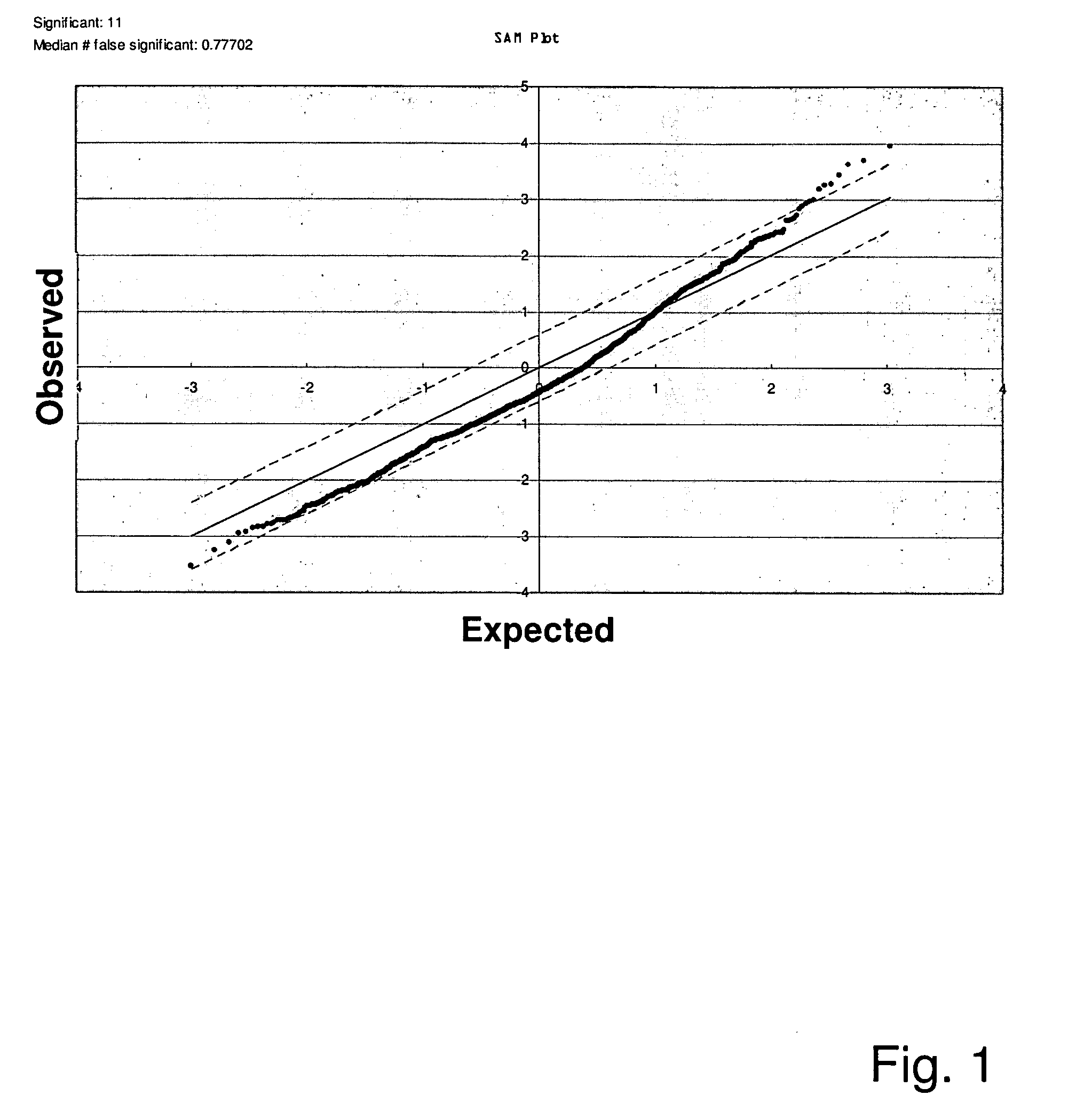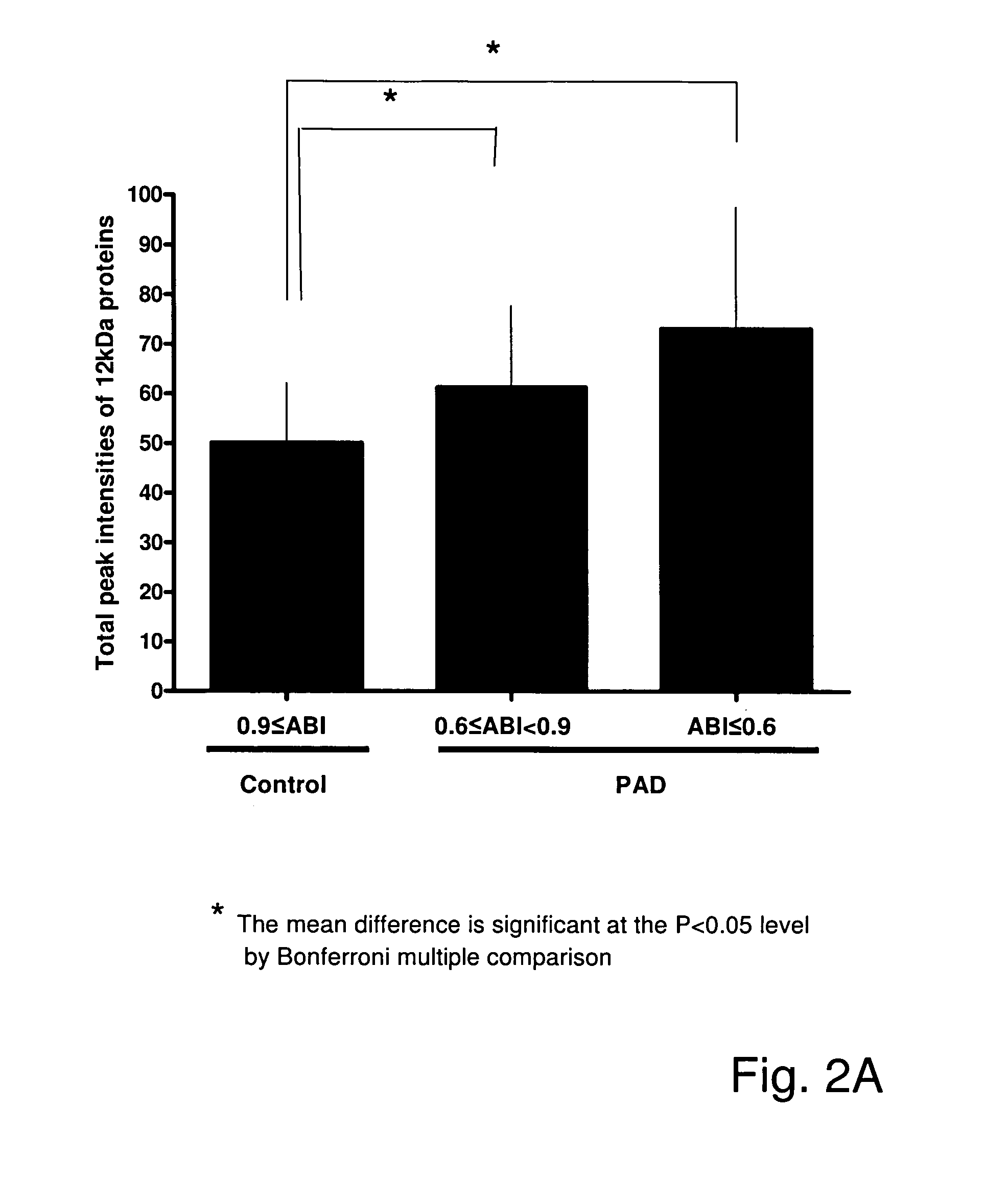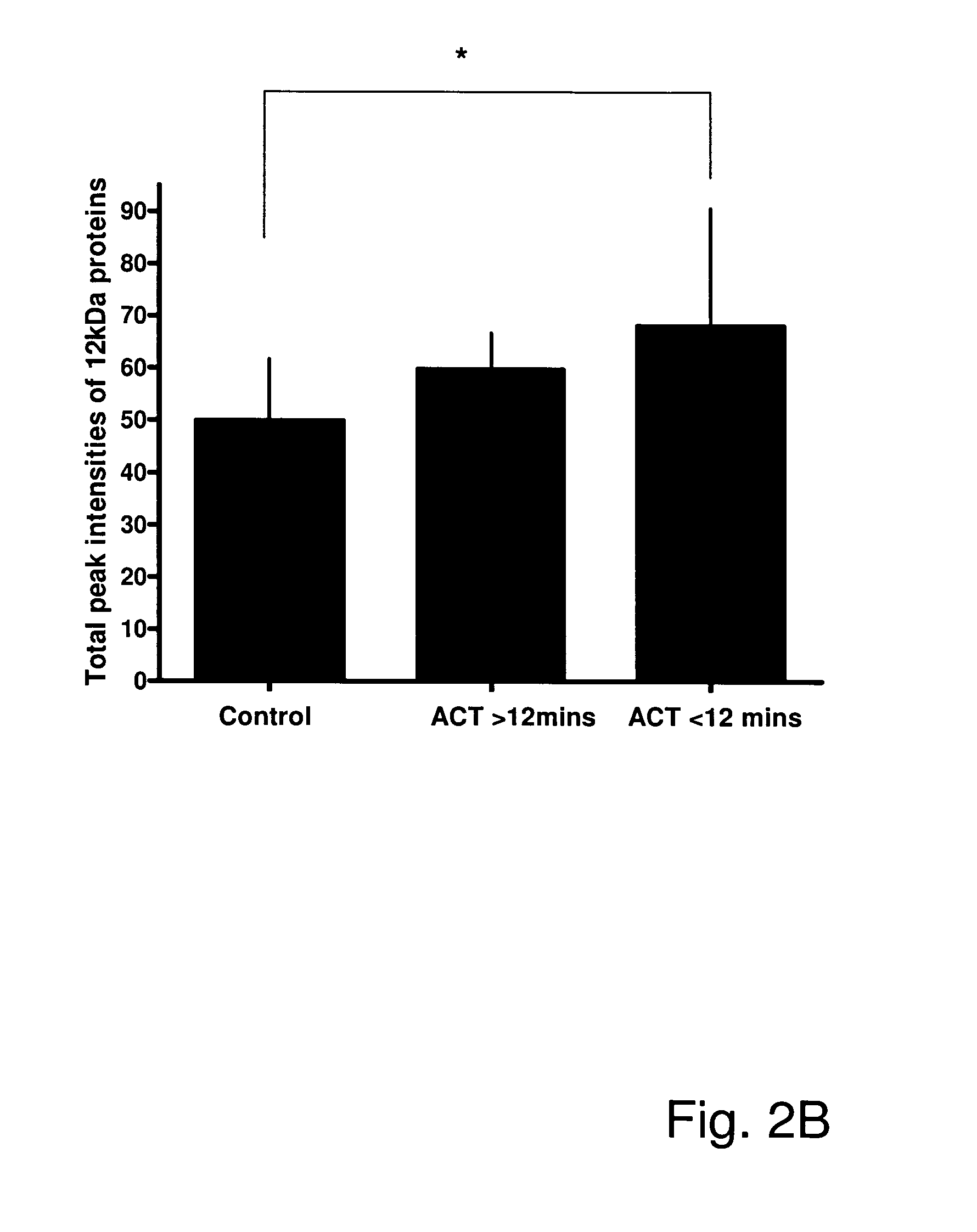Beta2-microglobulin and c reactive protein (CRP) as biomarkers for peripheral artery disease
a technology of microglobulin and c reactive protein, which is applied in the direction of peptide/protein ingredients, peptide sources, instruments, etc., can solve the problems of gangrene, morbidity and mortality, ulcers, etc., and achieve the effect of reducing the diameter of the artery, reducing morbidity and mortality, and reducing mobility
- Summary
- Abstract
- Description
- Claims
- Application Information
AI Technical Summary
Benefits of technology
Problems solved by technology
Method used
Image
Examples
example 1
High-Throughput Proteomics Analysis
[0189]In each subject in the discovery study, 1619 different protein peaks, arising from SELDI-TOF of using six different plasma fractions and two types of chips, were analyzed. SAM analysis revealed that of the 1619 peaks, there were 11 that had higher peak intensities in the PAD group (at a q value less than 10%; FIG. 1 and Table 2). Six of the 11 peaks around 12 kDa, obtained using different pH fractions, ProteinChip types, or energy states, were suspected to represent the same protein (Table 2). These peaks were identified as representing β2m as previously described. (Hampel et al. J Am Soc Nephrol. 2001; 12(5):1026-1035; Ishikawa et al. Am J Nephrol. 2006; 26(4):372-380). Other peaks found to be higher in the PAD group were 13 kDa and 15 kDa proteins identified as Cystatin C and Lysozyme C, respectively. Furthermore, unidentified proteins at 22 kDa and 36 kDa manifested higher levels in the PAD group.
TABLE 2Linear Regression Between Peak Inten...
example 2
Identification Of 12 kDA Protein as B2M
[0190]To confirm that the 12 kDa protein was β2m, a PROTEINCHIP®-array-based immunoassay and Western blot analyses were used. The immunoaffinity studies using anti-β2m antibody indicated that the 12 kDa peak was most likely β2m, based on the mass of the peak immunoprecipitated by the anti-β2m antibody. In addition, the 12 kDa peak could be immunodepleted by an anti-β2m antibody. Western blot analyses for β2m in fractionated or un-fractionated plasma from PAD patients and control subjects revealed expression levels that were generally consistent with the 12 kDa peak intensities, and which were higher in the subjects with PAD (FIG. 3, Panels A and B).
[0191]The peak intensities of the 12 kDa protein (putatively identified as β2m) were highly correlated with ABI (r=−0.49, p12 minutes; or PAD with ACT<12 minutes; (FIG. 2 B).
example 3
Confirmation Study of B2M as a Biomarker for PAD
[0192]A confirmation study was performed in a separate set of age and gender matched subjects with (n=20) or without PAD (n=20). Plasma and serum β2m were measured by ELISA. The β2m levels were significantly higher in PAD patients than non-PAD subjects both in plasma (PAD=2-17+ / −0-63 μg / ml, non-PAD=1-72+ / −0-42 μg / ml, p=0.014) and serum (PAD=2-91+ / −088 μg / ml, non-PAD=2-36+ / −0-67 μg / ml, p=0-026). Plasma β2m levels were inversely correlated with ABI (r=0-727, p<0-001). Log-transformed plasma β2m (p=0-030) and smoking (p<0-001) were independent predictors of index ABI in this validation study. Plasma β2m levels correlated with hsCRP by univariate correlation (r=0.201, p<0.001) and this was independent of other risk factors by multivariate regression (Table 3). Other independent correlates for plasma β2m in our population included estimated GFR, diabetes, hyperlipidemia and body mass index) (Table 3).
TABLE 3Independent Correlates of β 2 Mic...
PUM
| Property | Measurement | Unit |
|---|---|---|
| concentration | aaaaa | aaaaa |
| concentration | aaaaa | aaaaa |
| pH | aaaaa | aaaaa |
Abstract
Description
Claims
Application Information
 Login to View More
Login to View More - R&D
- Intellectual Property
- Life Sciences
- Materials
- Tech Scout
- Unparalleled Data Quality
- Higher Quality Content
- 60% Fewer Hallucinations
Browse by: Latest US Patents, China's latest patents, Technical Efficacy Thesaurus, Application Domain, Technology Topic, Popular Technical Reports.
© 2025 PatSnap. All rights reserved.Legal|Privacy policy|Modern Slavery Act Transparency Statement|Sitemap|About US| Contact US: help@patsnap.com



